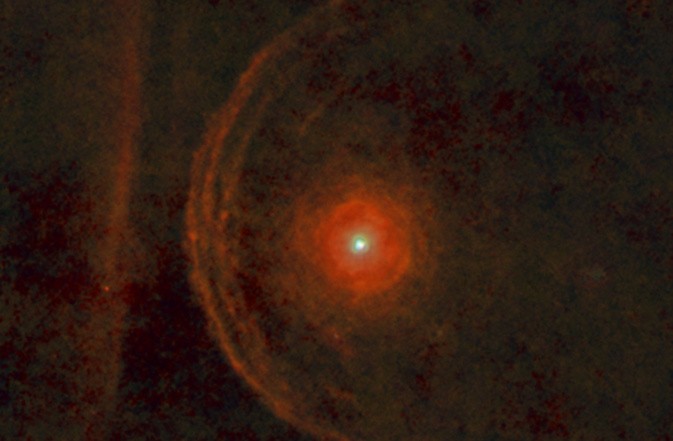The so-called Great Dimming of Betelgeuse - the 10th brightest star in the night sky and the second most brilliant in the constellation Orion - was accidentally captured by a weather satellite called Himawari-8.
The findings suggest that the apparent dimming was caused by a combination of the star cooling and nearby dust condensation.
Japanese researchers published the observations of Himawari-8 in Nature Astronomy.

What is Betelgeuse?
According to Space.com, Betelgeuse (pronounced "bet-orl-gerz" or "beetlejuice") is the second brightest star in the constellation Orion and the 10th brightest star in the night sky. However, it faded from October 2019 to February 2020 to around two-thirds of its regular brightness.
This "great dimming" event sparked concern that it was on the verge of exploding as a Type IIP supernova, which will likely be in the next 100,000 years.
Several teams worked to figure out what caused the "Great Dimming." One group studied hundreds of photos of the star and concluded that stardust was most likely blocking our view from Earth. They discovered in June 2021 that Betelgeuse had likely belched forth gas, which cooled and solidified, darkening the star.
Another hypothesis was that the star was cooling somewhat and the fluctuation might have resulted in a drop in brightness. It certainly had a role in the creation of the dust cloud.
ALSO READ : Betelgeuse's Great Dimming: Did a Dark Star-Spot Cause the Supergiant Star's Temperature Drop?
Japanese Satellite Witnesses Great Dimming of Betelgeuse Star
A group of astronomers described their own unexpected discovery, CNet said. The group saw Betelgeuse hiding in the background of photographs collected by the Himawari-8 satellite, a Japanese weather satellite.
The chance discovery backs up some of the earlier studies on the Great Dimming's beginnings. It hints at a new avenue to investigate our cosmic neighborhood that has yet to be explored.
Daily Mail, citing the astronomers, said Betelgeuse's dimming was produced in almost equal parts by the star cooling by about 284°F (140°C) and dust condensing from warm gas around it.
The origin of this unexpected dust creation, however, is yet unknown. Experts believe the gas was propelled outwards by a shockwave in the star, which eventually condensed into dust. This explanation might also explain the star's subsequent cooling. However, scientists aren't sure if the two occurrences are linked.
Here's Why This Supergiant Star Had a Great Dimming
The researchers came to the same conclusion as their predecessors after studying that speck of light. According to the Indonesian news website Republika, Betelgeuse diminished due to dust and natural variations in its luminosity. That isn't thrilling, but it is excellent proof that the experts are all on the same page.
The idea that a weather satellite was able to offer this data in the first place is fascinating.
Some of the most powerful telescopes on the ground were already booked to gaze elsewhere when Betelgeuse abruptly faded. One, the Very Large Telescope in Chile, allowed a team to use its telescope for observations, delaying the completion of other projects. However, these instances aren't always resolved.
RELATED ARTICLE : Red Supergiant Star Betelgeuse Great Dimming Mystery Solved, Here's Why It Gets Dark
Check out more news and information on Space in Science Times.
© 2025 ScienceTimes.com All rights reserved. Do not reproduce without permission. The window to the world of Science Times.












